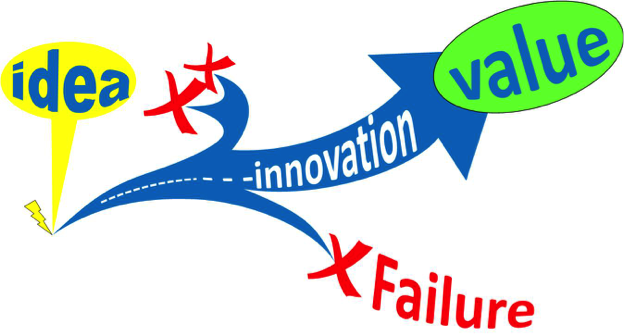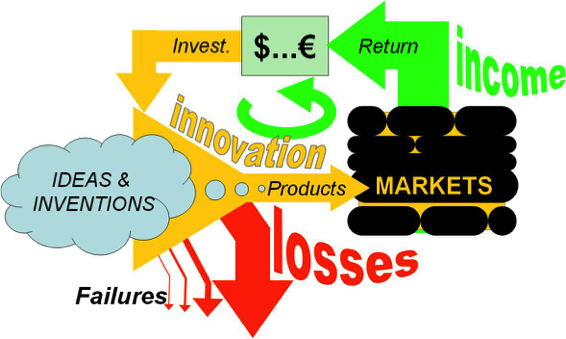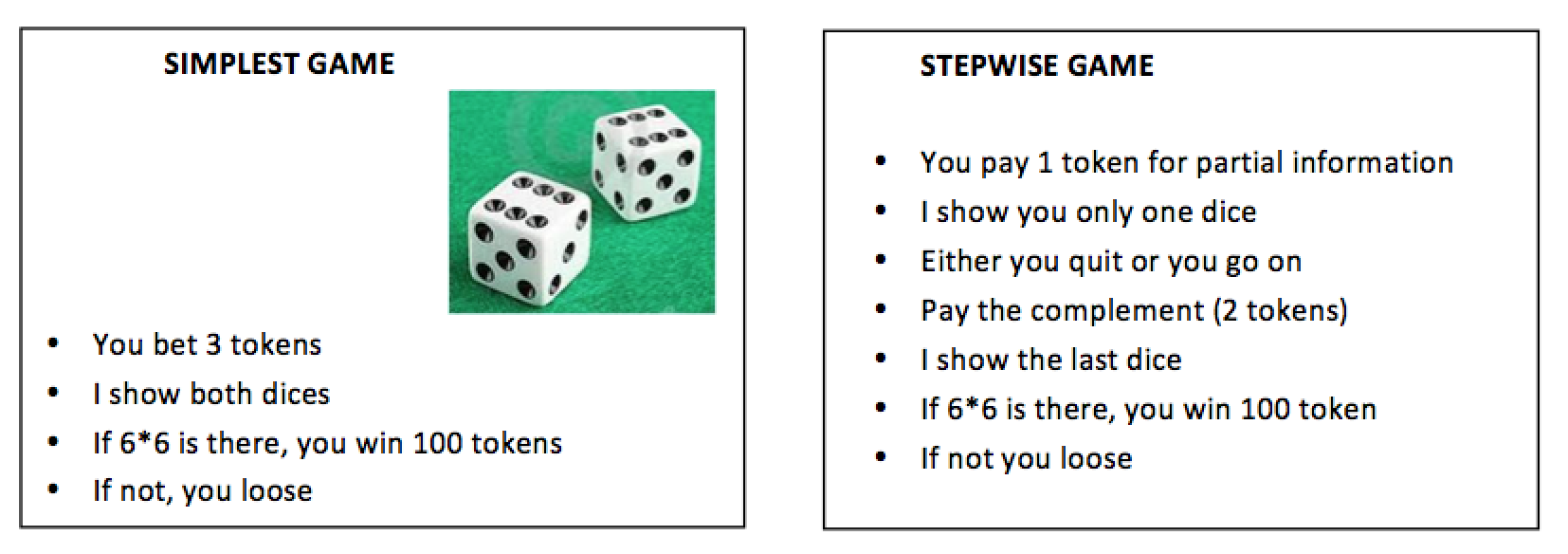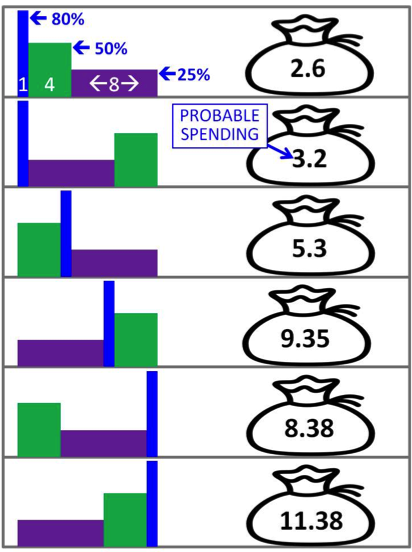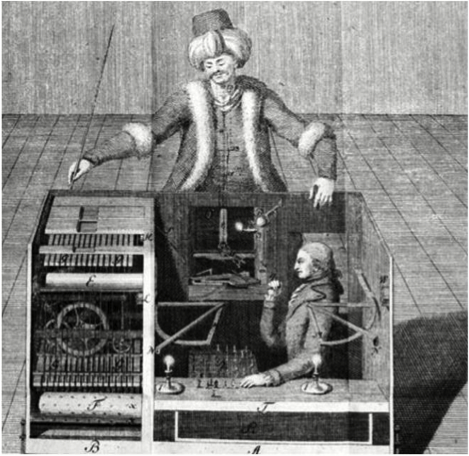“Fail often, but fail fast and cheap” is a well known mantra, often repeated by innovation gurus. However this piece of wisdom is not so easily understood by enthusiastic would-be inventors and innovators. This text attempts to illustrate this somewhat puzzling recommendation and demonstrate by a priori reasons how true, challenging and beneficial it is to fail fast and cheap.
1- Failure as most likely fate for innovation
Innovation starts with an original idea, an invention. This idea is new; it sounds great but, as nobody has materialized this idea before, trying to go on with it and generating value implies opening a trail within unexplored territory. Indeed the idea will have to blossom in a context dominated by knowledge deficit and fogged out by uncertainty. Soon the innovation team will encounter obstacles. Maybe a solution will be found, maybe the project will have to be deflected to comply with new constraints, but it may also happen that the project tumbles and its attached expectations vanish.
Value creation is the objective of any innovation process, but failure, or rather say, withdrawal, is a high probability alternative, an outcome that all innovators have learned to flirt with.
It is very difficult to collect and compile data on failures in innovation. In fact nobody is keen to blow the trumpet and advertise when an innovation project is allowed to die. The main attitude with respect to innovation failure is cover-up and this for 2 reasons:
- Nobody likes to fails
- This information is confidential, it may help out competitors.
It is only in the case of major crashes that some information leaks out, usually for advanced projects with a large cumulated budget. There are also hype cases, where expectations were publicized, driving general hope. In that case failure is often coming with commentaries and tentative explanations.
I am personally a failure story collector. I found most of them in history, all very valuable. They tend to provide more learning on innovation mechanics than highly publicized successes often misshaped as legends rather than true life testimonials. Let me quote a few examples of failures to excite your appetite.
• STOLEN INVENTION. Dietrich Winkel invented the Metronome around 1812 in Amsterdam. Johan Nepomuk Maelzel visited his shop and stole the invention. Maelzel produced “his” metronome in England and became famous for “his” invention. The failure is for Winkel.
• RELUCTANT OPINION LEADERS. In the 1850’s, 30 years before Pasteur and Koch, Ignaz Semmelweis, a humble doctor implemented the basics of aseptization. He forced down the death rate from 30 % to 7 % in his maternity ward, but he was fired by his boss when he summoned him to wash his hands. Aseptization practices were abandoned. Professors and Doctors could not accept to be responsible for mothers’ death, an event comfortably attributed to fatality. • PRODUCTION COST TOO HIGH. The innovation Grand Master, Edison himself, also experienced failure. In the 1880’s Edison spent all the money he made with the light bulb, trying to enrich low grade iron ore with magnetic filtering. He worked hard to lower processing cost by sizing up all equipments, building a huge plant. But his treated ore was never competitive. Luckily, innovators like Edison are cats with 9 lives.
• CRASHING THE DEMO. Around 1910, young Henri Coanda designed the ancestor of the jet engine. He built a prototype, and decided to make a demonstration in front of potential investors. He himself had never flown, but he took the stick and tried to just taxi. His engine was stronger than expected and he inadvertently took off and ended crashing in a wall. Hopefully Coanda was only bruised, but his project was ruled out as too futuristic. The next jet engine demo was in Italy, 30 years later.
• DEADLY PATENT INFRINGEMENT. In the 70’s, Kodak, the silver photography leader was anxious to see Polaroid marketing an instant camera. Kodak made a huge R&D effort to generate its own version of instant photography. They made a massive market entry until they were stopped by a severe patent infringement trial. Kodak lost about 3 billions $ and never really recovered.
• SOMETIMES, NATURE DOES NOT COOPERATE. In 1987, the Nobel Prize was given to Müller and Bednorz for the discovery of high temperature superconductors. All electro-technical majors started ambitious innovation projects aiming at lossless electrotechnical machinery. A few years later, it was found that the critical current in such materials was far too low. The project has since returned into basic research labs.
• TECHNOLOGY PUSH. In the 80’s, Lord Sinclair who built a fortune in the early electronic consumer goods decided that he was to develop a battery based electric vehicle. A tricycle was designed and marketed via a vigorous technology push. But users were feeling extremely unsecure in the slow and light vehicle. The resulting flop cost Sir Sinclair his jewel, a personal computer company that was sold to Amstrad.
There are many reasons to fail, and as I like to tell beginners, if you try to make a complete list for your project, the obstacle on which you will stall one day is most probably among those you missed in the list. In this cloud of uncertainty one point remains very clear: the later a project fails, the larger the losses will be. Indeed, failure/withdrawal implies that the cumulated budget that was invested in the project is finally written off.
1.1- Statistics on innovation failure: a headache
Trying to estimate a vague failure probability for a new born innovation project is extremely difficult. Indeed both ends of the innovation process are, by nature, raising difficulty.
Ideation phase: Let us zoom on the very early part of the innovation trajectory, approaching the stormy phase of ideation in the inventor’s brain. Linus Pauling said: “The best way to have a good idea is to have a lot of ideas”. Inventive people are indeed like that, they generate flood of ideas without self-censorship and then, they screen out the barely born ideas with series of rationality filters. This is classic, you wake up with a good idea and soon after, as you wait for the toaster to pop-up, you realize that is won’t work. Too bad! If the idea survives this step, it may end up been wiped out during the traditional casual chat with colleagues at the morning coffee. Then, the few survivor ideas will have to pass through other early deadly tests: either an estimate on the corner of an envelope, or a quick check on the Internet. Screening off ideas at the very beginning is leading to intense withdrawal rate. As illustrated in fig.2, this diverging withdrawal rate in the early innovation phase is rendering any withdrawal statistics illusive.

Fig.2: Zoom on the early phase of innovation, close to ideation, illustrating how frequently new born ideas are discarded.
Value creation end: When an innovation project requires external investment, then its fate is recorded by external observers. If the project is born in a large corporation, it will call for exceptional funding, if it is a small independent operation as a startup it will call for venture capital. In both cases, somebody will record the fate of the project and in the long run someone will have an estimate of the project failure rate. VCs (Venture Capitalists) for example do know how good their projects are doing in average, but this type of data is most of the time confidential.
Even for mature projects, one of the reasons for dubious data on innovation success rate is related to a vague definition of success (or failure) as a final outcome. Indeed what is the definition of success for an innovation project? There is no clear frontier and plenty of half/half success/failure. VCs will admit that for them it is return of investment with, say, more than a tenfold gain. This number is shocking most beginners in the innovation game, but it perfectly makes sense considering the fact that VCs admit to face a high probability for most projects to become flat losses. VCs are rarely very specific on numbers except when reporting to their share holders, but they all admit that in their business, a very few winners will have to support the crowd of losers.
1.2- Failure probability gross estimate
I will dare to throw a gross estimate, born from private discussion with VCs and my own experience in industry: the winner/loser ratio in innovation is somewhere between 1 and 3%. This is indeed a small number and we are here speaking only of projects which were large enough to acquire some visibility.
Note that estimates of success by VCs may not be correct in the sense that VCs tend to step out of an innovation project at the peak of its speculative value, before the resulting value is realized on the market place. Let us take the example of e-Ink, a spin-off from MIT that developed a paper like display. The market potential is for e-books. When prototypes and pre-series where approved by key players such as Amazon or Sony, e-Ink was purchased by Prime View International, a Taiwanese manufacturer for displays. At this point, for VCs, the project value was settled during the transaction. But the innovation process was not finished as e-books are still today struggling for market share against tablets. The value creation, as evaluated by VCs is not encompassing the true value creation of an innovation project. But it is a fair estimate.
IT IS FAIR TO CLAIM THAT FAILURE IS THE MOST LIKELY FATE FOR INNOVATION PROJECTS • OUT OF A CROWD OF PROJECTS, ABOUT 1-3% WILL PAY BACK FOR ALL THE OTHERS
We shall also stress that the benefits of innovation aren’t limited to a mere return on investment, even with a tenfold gain. In a moving world where rapid obsolescence is corrupting any business or product lines, we know that innovation is the only option for survival. Here we do not discuss money but rather death or life. However this benefit is not accounted for here.
2- Innovation described as gambling

New ideas (grey-blue cloud) are introduced in the famous innovation funnel powered by investment coming from a resource tank (in green). The innovation funnel has massive losses attached to failures, but some projects become successes in the market place and allow extra revenues attached to their novelty. This income returns back to the tank. For the cycling machine to be self-sustained the cycle gain should be positive. As shown in fig.3, innovation financial balance is at the core of a cyclic random game machine. One may then raise a key question: “is there a winning strategy at this game?”
The first obvious remark is that for a random game there is no strategy to win in a single try. The only option for winning is statistical, running many cycles and, on average, gaining more than losing. As for any cycle machine another statement make sense. A winning strategy implies strict care at all stages: limiting losses and maximizing gains. Gain in the cycle is the benefit generated by the innovative aspect of new products released on the market. Losses are related to budget write offs associated to innovation project withdrawals. In this paper, we will focus on this loss side.
Increasing efficiency of the innovation machine on the gain side is related to industrial strategy. Sure enough, proper management of Intellectual Property is a key tool in this aspect of innovation valuation. One classical deficit is coming when the result of an innovation project doesn’t fit with a company’s strategy. A famous example was Xerox having business model conflicts with so many innovative options created by PARC in the 70’s-80’s (see Chesbrough1). In fact most corporate decision makers tend to shelve innovation that happens not to fit with their product portfolio rather than licensing them to other companies that might become competitor. Indeed innovation is of a random nature not only on the success/failure axis, but also on that of the nature of the final product. As a former researcher I can testify that if you know what you are searching for, but you really do not know what you may find until you have found it, then optimizing the output of innovation implies being able to cash in on good results regardless of their match with the company main streamline. This aspect of business is far easier to implement in an Open Innovation mode.
The loss side of the innovation machine is related to discarded projects. Is there a strategy to systematically limit such losses? The answer is yes and we will illustrate this statement with simple games.
2.1- Two options for a simple dice game
Let us compare two similar random games played with two dices. In both cases, at the beginning the croupier throws the dices and the result is hidden by a hat. The only way to win is for double six. Then the croupier is offering two options for the game.
The two games are very similar. However they differ deeply by their statistical outcome. The simplest option yields an average loss of 0.222 token per game. For the stepwise option, there is an obvious winning strategy. If at the intermediate step you do not see a first six, you exit the game. Then statistics can be worked out: with the winning algorithm, your gain in average is a very healthy 1.444 token per game. This drastic change of odds is due to the fact that the stepwise game has an exit option when part of the game uncertainty is already lifted. Here we are on the track, the strategy for limiting losses when facing uncertainty is to invest by steps, and make sure that uncertainty is gradually cleared up along the way.
2.2- Introduction to the hurdle game
Let us propose another game, closer to the innovation process. It is like a hurdle race as in fig.4.
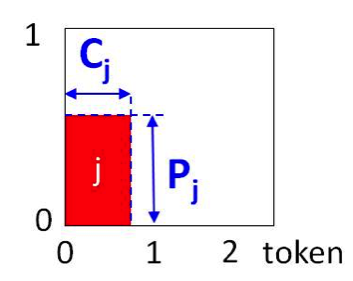
Fig. 5: Definition of hurdle geometry where Pj is the probability of failure and Cj the requirement investment for trying.
The project has to pass several hurdles characterized by different heights (probability of failing) and different width (budget for attempting this hurdle).
Let us now consider an innovation like game where the player has to pass successfully a set of hurdles. As shown in fig.5, each hurdle bears its own risk of failure Pj. Each hurdle has also an entry cost Cj, representing the budget required to try passing this hurdle. We will consider N hurdles, defined by their height Pj and their width Cj. For simplicity’s sake we will consider hurdles as independent and decoupled.
The probability for final success is the combined probability to pass all hurdles:
P(success) = Π (1-Pj), for j= 1,2,…N ;
in order to achieve success, the cumulated cost invested is:
C(success) = Σ Cj, for j = 1,2…N
Note that this final success probability is not dependant on hurdle ordering. The game is played along what we will call “attempts”, namely placing all hurdles in a given order and then trying to pass them. Now if we focus on the statistical average spending along an attempt, all attempts are far to be equal. The statistical cost of an attempt is the average spending made trying to pass the hurdles in the corresponding order. This sum is smaller than C(success) as there is good probability that the attempt will not end up as success because the attempt (and the spending) may well terminate before the full sequence is completed. All this can be worked out mathematically, but I will release you from calculus and rather focus on some of the most important results.
2.2.1- Statistical cost is smallest for sequential processing
If for example, the player decides to jump together hurdles j and j+1, he will invest (Cj+Cj+1) and the composite probability of success will be (1 – Pj) (1 – Pj+1), but compared to a sequential attempt, first hurdle j, then j+1, the statistical spending is increased by Sj Pj+1. This result recalls the difference between both dice games described above: it is better to distribute risk allowing early exit in case of failure.
2.2.2- The best strategy is to order hurdles with decreasing Pj / Cj.
This point concerns the optimization in ordering hurdles. Mathematics are very clear on this point, the best is to start with the highest P/C ratio. In Fig.5 this ratio is actually the rectangle aspect ratio. The most “vertical” hurdles have priority!
2.2.3- Dispersion for probable cost among various attempts
Just to illustrate how important is the choice in ordering hurdles in an attempt we calculated the case for a game with 3 hurdles illustrated in fig. 6. The hurdles are taken with probability of failing of: 80%, 50% and 25% and the attached costs are respectively: 1, 4 and 8 tokens. With such 3 hurdles, the overall probability of success is 7.5% and the corresponding spending to reach success will be 13 tokens. There are 6 different possible attempts combining 3 hurdles (3!), and we displayed in money bags the corresponding statistical spending. According to the statement above, the lowest probable cost is 2.4 token, when hurdles are taken in a decreasing order of aspect ratio. What should be stressed is how large the variation is for probable cost depending on hurdle ordering. In the specific chosen case, the probable cost swings by more than a factor 4 between the best and the worse hurdle ordering. Such dispersion always comes when a significant disparity exists between hurdles; either in width (cost), in height (risk) and aspect ratio (risk/cost). This point is stressing that processing stepwise and sequentially in the innovation process is limiting budget at risk, but, as important is the order in which problems are addressed. The key messages behind this hurdle game are:
- Critical difficulties threatening innovation projects should be addressed sequentially.
- Difficulties that bare the larger risk have priority
- Difficulties that can be addressed with the smallest resource requirement have priority
2.3- Hurdle game: proximity and distance from real innovation
The hurdle game introduced above has indeed some similarities with innovation processes, but it remains a crude model and conclusions should be taken with a critical eye.
2.3.1- Hurdle game as an image of phase gating
Splitting a global project into sub tasks is a classical management approach which was formally introduced in PERT (Program Evaluation and Review Technique) and WBS (Work Breakdown Structure). For innovation, stage-gating or phase-gating was very successfully introduced. The hurdle game was in fact designed for its similarity with stage-gating. A stage is a hurdle, the hurdle width represents the budget allocated to the subtask of meeting the gate objectives and its height represents the probability for meeting the objectives. At the conclusion of a given phase/stage, the project is facing the gate; it will either pass or be rejected if the new elements acquired during the phase are promising or bleak. Missing the gate is the equivalent of falling when passing the hurdle.
2.3.2- Time as a missing parameter
Time is not present as an optimization parameter in the hurdle game. We all know that timing is, in real life, a critical issue in most innovation projects. Time pressure is mostly coming from competition. When Apple is designing a new function for whatever electronic device, everybody in the development team is feeling time pressure. They know that abroad other teams are on the same track. Ordering hurdles sequentially is not acceptable in a competitive context. Parallel processing is the only way to gain time. Let us see when time is most important and where the hurdle game remains relevant. Parallel processing is a common practice in engineering when risk is under control. On the other hand as risk is the highest in the early phase of the innovation process, then it is wiser to manage risk rather than reducing time to market. Later, when getting close to market entry, most of the riskier hurdles are passed; risk is reduced; the remaining hurdles are low and wide. At this moment time pressure should become a key driver and parallelism is an option to be considered.
- Hurdle game lessons are valid for the first few hurdles at the beginning of innovation.
2.3.3- What is a hurdle, and what does passing it mean?
A hurdle is a subtask, and as we are dealing with innovation, the priority objective of the task is to reduce risk. Risk is attached to lack of knowledge. A hurdle can be seen as a question, a burning question, for which we have so far no answer. For example:
- Is the required application range accessible to this novel technology?
- Will public morality organizations aggressively oppose this project?
- Is the estimated product cost acceptable?
- Can we make a good business with that?
The “question” is always a death or life question, its answer decides if the project is viable or not. An attempt to pass the hurdle means acquiring enough knowledge to generate an answer. Knowledge will be extracted from ambient knowledge (googling, learning, searching literature), derived from other’s knowledge (involving experts, contracting external labs) or created in the lab (internal R&D). Knowledge, when acquired, will decide if the corresponding hurdle leads to project withdrawal or allows continuing with the next hurdle.
- Hurdle passing means acquiring knowledge and reducing uncertainty and risk.
2.3.4- Being rational in a context of uncertainty
The hurdle game conveys a feeling of rigorous rationality based on solid statistics, but reality is quite different: we are at the beginning of an innovation project, the context is full of unknowns and dominated by uncertainty. It is difficult to phrase the exact hurdle question, even more to estimate its probability of success and budget. This is where gifted innovators can still go on, working out a sound strategy based on crude estimates. At the beginning it is probably good enough to work for both probability and budget with a crude scale such as small/medium/large.
2.3.5- Changing odds by smart design of the first few hurdles
As the priority is for hurdles with the smallest budget, it is recommended to put the best of your brain in conceiving a low cost knowledge acquisition strategy to overcome the first few hurdles. What counts is gaining knowledge and reducing uncertainty and risk. The best skill of an innovator is in this early optimization. We will see some simple and illustrative examples below.
3- Illustrative examples
3.1- Parachute development and stepwise budgeting

Fig. 7: The early invention of the parachute is attributed to Louis-Sébastien Lenormand (1757-1837), an enthusiastic physicist. The image shows his public demonstration in 1783, where he jumped from the tower of Montpellier observatory.
Being picky when it comes to an innovation budget is sometimes not a natural attitude for an enthusiastic inventor. However when your own life is in the resource at stake, then inventors are, usually, smart in designing their innovation hurdles. The physicist Lenormand was pushing his invention, an early version of the parachute. He was not the first author to conceive such a device, various Italian inventors, including Leonardo da Vinci made theoretical designs. But Lenormand was not doing theory, he was pushing an application, it was innovation for good. His idea was to save people trapped in tall buildings on fire. Knowing the natural public reluctance to adopt such an invention, he knew he had to make a convincing public demonstration. But at the beginning of the project, the risk was too large, he couldn’t put his life in the next experiment budget. Luckily, he managed to design several hurdles in order to first reduce the risk. The first hurdle was addressing the mechanical strength of his reinforced umbrella. He dropped from the tower heavy sand bags attached to his prototype. The next hurdle was to address the resistance of bones and flesh to a rough landing. Parachute jumping was then experienced by various animals of increasing weight. It is only when risk was significantly reduced thanks to earlier experiments that he scheduled his own public demonstration. He survived the jump and became a local hero. However the niche market he was addressing was not enough to sustain further development of the invention. The modern silk parachute was invented in the following decades by Jean-Pierre Blanchard and André Garnerin both driven by the application of saving balloonists.
3.2- – Early automatic stamp vending machine

Fig. 8: I could not resist illustrating this case by an inventive solution for queuing in Thailand before the beginning of administrative service (from www.laposte.fr)
This example is taken from the 70’s when computers and displays hardly existed. The most sophisticated automatic machines where juke boxes and pin-ball machines. They were driven by electromagnets and their simple logic was based on hard cabled relays. Vending machines also existed but were limited to the simple choice of the item displayed. At that time the French postal service was a public operation called PTT. Weighing mail, choosing and selling stamps for individual mails kept post office clerks busy, however the business profitability was very poor. Thus there was a project to create an automaton for self service, weighing the envelope, stamping it and cashing the due price. The project was initially pushed by the engineering department, which was brainstorming a complex assembly of lamps, sensors, switches and relays until leadership was assigned to a project team. This team tried to figure out the most risky problems attached to the project, and they found two burning questions:
- Will labor unions oppose the introduction of such a machine?
- Would standard users of postal services be able to handle such complex machinery?
Both questions were considered to be bearing a lot of risk. The question concerning distress for inexperienced users was identified as very difficult but the budget to address it was considered very large as it would, most likely, imply comparative tests of many prototypes. The union issue was not as frightening budget wise, and it was decided to tackle this point first. They contacted unions and co-designed a survey on the particular work of stamping mail. Concealed observers from the ergonomics department were sent to study the letter stamping job. It was found that more than half of the transactions were conducted without the exchange of a single word between the clerk and the customer. Moreover the price to pay for customers was to suffer from waiting lines. It was acknowledged that weighting/stamping was indeed a low added value job and unions became a partner of the automation project. Then the team was facing the next hurdle and luckily, someone had a brilliant idea to address the question without building series of prototypes. They decided to make a false machine, with somebody hidden inside.
The operator was switching function circuits in response to the user demand following a written predefined logic. The operator’s logic could be modified at little cost, along with the instruction panel in front of the machine. Most importantly, the operator could observe the user through a one-way mirror and record his hesitations and his mistakes. The device turned out to be a fantastic learning machine as the development team was exploring a new field at the frontier between system design and psychology, a field now called MMI (Man Machine Interface) which is today studied in top technical universities.
Not only the cost of addressing this specially designed hurdle was very reasonable, but sampling test runs on would-be customers was generating new knowledge at a rapid rate. The leading team was able to zoom on a machine principle of operation that was handled properly by the majority of postal service users.
Then after passing these two hurdles, the budget was opened for the physical building of a prototype. Engineers that had been waiting with their smoking soldering iron in their hands could now finally proceed. The novel system was launched in large post offices at the end of the 70’s. This example shows how to design and order the first few hurdles in an innovation process in order to generate the maximum knowledge at a minimum cost.
3.3- Easy life for digital service market testing

Fig. 10: This image, borrowed from appdevelopermagazine.com, illustrates how straightforward market testing is for digital services for connected customers.
We will describe as a last example, the fast change that came recently with one of the most difficult (and critical) hurdles in innovation. It is attached to the following burning questions:
- Will customers like this novelty and be ready to pay a good price for it?
This is definitively a key hurdle and if a given innovation project is attempting to pass it and if the answer is bleak or even a bit questionable, everybody in the company will dismiss the project.
However, despite its criticality, this hurdle was never placed early in the innovation process, in particular for radical novelties. Indeed marketing specialists know that interviewing would-be customers on the interest of a radically new product is extremely difficult. There is a mental barrier, a customer cannot imagine and mentally play with something that does not exist in his mind. This means that the marketing hurdle has to wait until the project team has first created convincing prototypes. Then, and only then, marketing tests are organized in which sampled customers will evaluate the innovative product.
Such marketing tests are also rather expensive. A famous case took place near the end of the rather hesitant innovation process that took place in 3M for the famous Post-it®. Prototypes were convincing and customers liked the new product. But before launching a massive introduction campaign, 3M management was still insecure because the key question was: “will customers renew their purchase regularly?” Indeed, Post-it® is a consumable and the true marketing question was an issue of regular consumption, not just a first time attraction. The debate was intense in Saint Paul, and there was no convincing evidence for pros or cons. Then 3M designed a specific market sampling test that is now remembered as the “Boise blitz”. The rather isolated town of Boise in Idaho was treated as a market research laboratory: all shops were flooded with Post-it and armies of observers were carefully recording customer behavior, in particular repeat orders. It was a success, and thanks to the conclusions, 3M management decided to bet all its resources in the early 80’s for the worldwide launching its new blockbuster.
The globalization of communication technology has drastically changed the odds for designing the marketing hurdle in the field of digital applications. Today, a start-up designing a new application, whether it is an on-line game or a platform service, can do its marketing test on line with a quasi immediate feedback from connected would be customers. There are many different approaches for selecting and enrolling the contributors, but what is impressive is how fast and how relevant the feedback is and how little it costs compared to good old person to person market analysis. Moreover, innovators that submit the prototype of a numerical application are able to implement on the piece of software the equivalent of the one-way mirror discussed in the previous example. They can monitor what functions are activated by users, their hesitations and their preferred way of using the service. This is why early user feedback is now a key ingredient in the design of numerical applications.
Connected servicing is using this adapted early market testing technique to turn the marketing hurdle into something light and easy. Thanks to its very small cost (relatively), this hurdle is now coming with a very high priority in the innovation process for numerical applications. This point combined with the relatively low cost for building up a huge data bank has turned innovation in the numerical world into a low cost and low risk endeavor.
4- Summary
Innovation is a very risky venture, and in order to be winning on average at this game, it is important to shape the innovation process in such a way that if it is to fail, it should fail at the lowest possible cost. We designed a model random game, the hurdle game. It has interesting similarities to the innovation process and statistical calculus can be applied to it which leads to the following meaningful observations.
- Innovation is to be conducted sequentially, one hurdle after the other as in stage gating.
- Passing a hurdle is working out the answer to a burning question threatening the project.
- The ordering of hurdles has great impact on the projected cost of the innovation process.
- The best is to address hurdles with the highest ratio of probability of failing to cost of attempt.
- All these recommendations are valid at the beginning of innovation, when risk is large.
- Standard engineering management rules are to take over later when risk is reduced.
All such recommendations are indeed summarized by the famous mantra “fail, but fail fast and cheap”. This logic is valid as long as risk is the dominating parameter in the innovation process, essentially at the beginning when a deficit of knowledge leads to large uncertainty.
Playing with the hurdle game leads indeed to rather sensible conclusions. It is sending a warning signal to innovators. In setting your own priorities do not blind yourself with the urge of proving how great your project is. The true priority is is to find if bugs are hidden in dark corners. Shedding light onto these patches of unknown is the most urgent task and, as it has to be done as soon as possible, when the budget is scarce. It actually requires a lot of brain power to have it done fast and cheap. This seems to be the recipe to become a serial winner in innovation gambling.
Expertise you need. Fellows you can trust
The Conciergerie platform sets up your call appointment with a Presans-vetted international expert within few days

